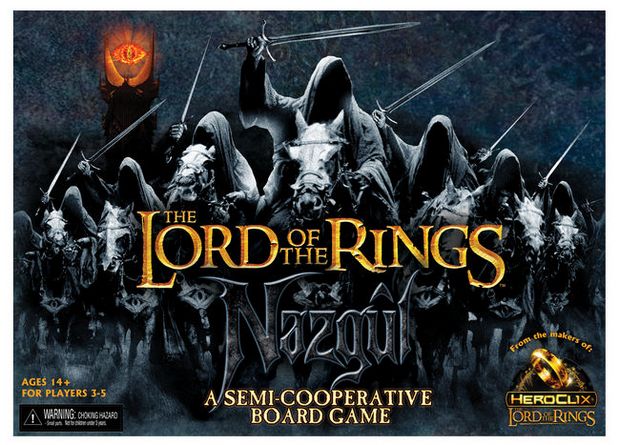There are a whole host of games that come close to this ideal, but fall short in some area. Here are a few common scenarios, with some examples of each.

Perhaps the most common “almost co-op” is the one vs. many. One player has to control the opponents or enemies, while the rest of the group teams up to meet the challenge. The classic example would be a session of Dungeons & Dragons, though I consider this an imperfect example, since the Dungeon Master’s job is not to win, but to make sure everyone has fun. Better examples would be Descent: Journeys in the Dark or HeroQuest, where the monsters are controlled by one player and used to smash the other players into oblivion. Scotland Yard, Fury of Dracula, Small World’s Necromancer Island expansion, and the Bioterrorist variant for Pandemic all fall into this category.
A second group of games that are almost, but not quite co-op are the hidden traitor games. The game begins with everyone working together, but in the late game, one player switches to work against everyone else. There is a fine line of distinction here; games like Shadow Over Camelot and Dead Panic have mechanisms in place that sometimes switch players from one side to the other. Games like Battlestar Galactica and Betrayal at House on the Hill, though, are designed to have a traitor in every single session. Thus, the entire experience becomes one of distrust and political maneuvering. This sense of unease has a huge effect on the feeling of teamwork, and though it can be a fun experience, this isn’t true co-op as defined above.

The competitive co-op, which would seem to be an oxymoron, is also becoming more popular in board gaming. In these games, players are technically working together to accomplish a goal, but they are also looking out for themselves in an attempt to be the most successful in the end. Legendary (the Marvel deck-builder) and Castle Panic technically fall under this umbrella, though end game scoring is secondary afterthought to overcoming the game’s challenges in the first place.
This is not the case in more aggressive games like Cutthroat Caverns. In this game, players have to survive nine monster encounters together or everyone loses; however, the one who lands the most killing blows is the sole winner in the end. Lord of the Rings: Nazgul is quite similar, where all the Ring Wraiths must work together to prevent the Ring from being destroyed. But the Wraiths are individually gaining favor with Sauron all the while, often directly competing with one another for victory points. In the end, there can be only one winner, though all can lose if the heroes are not stopped. Like hidden traitor games, these competitive co-ops can be enjoyable in their own way, but clearly, the emphasis is not on teamwork, but rather individual achievement.
There are of course hundreds of other tabletop games we could mention that include some form of teamwork. Axis and Allies is one popular example of a team game which requires cooperation. Hidden identity games, like Werewolf, The Resistance, and Shadow Hunters also reward players for working together to achieve their goals. All of these, though, as well the the one vs. many, the hidden traitor, and the competitive co-op discussed earlier, fall short of a truly cooperative experience. The defining characteristic of a true co-op is that there is no direct competition between one player and another. Working together for the good of all players is what co-op is all about, and the genre is becoming amazingly popular in game stores everywhere. Hopefully we have many more true co-op games to look forward to in the future.